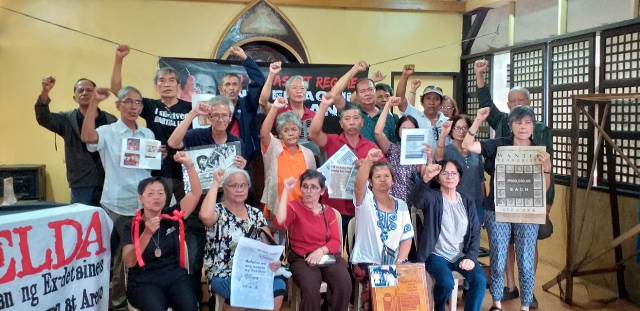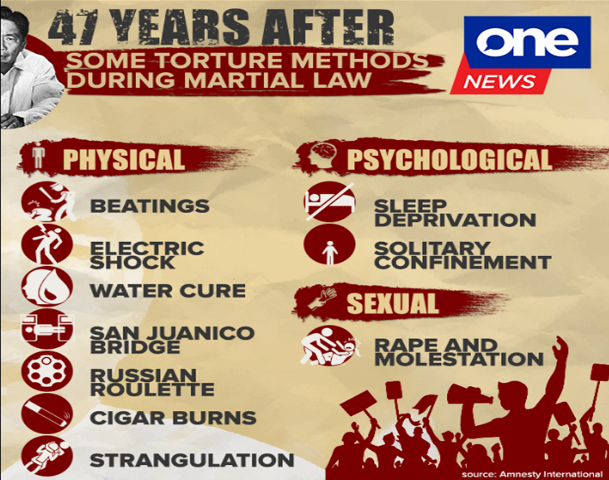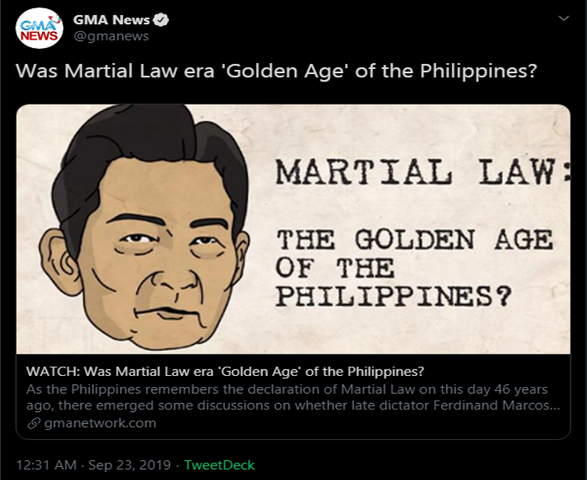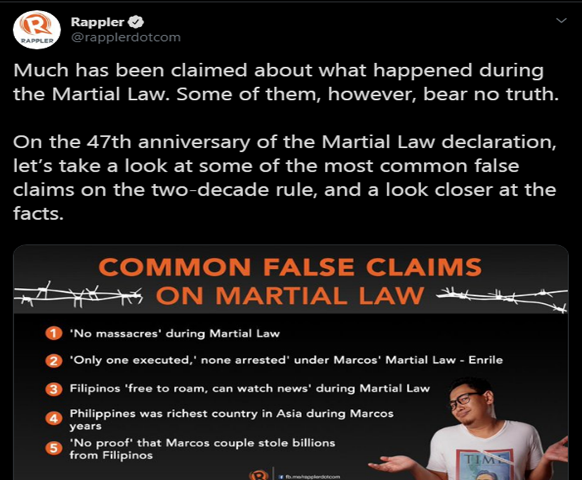Martial Law Anniversary: Barely in the news, missing the obvious

SEPTEMBER 21 came and went this year without much press attention.
The serious lack of interest stirs concern among those who lived through the period. More than four decades after Ferdinand Marcos issued Proclamation No. 1081 placing the entire country under martial rule, another president with similar dictatorial tendencies is at the helm. There seems a lack of will as well to protest against the removal of effective checks and balance, the suppression of the political opposition, attacks against the press and a pervasive violence that engenders fear.
The coverage of the protests organized by some groups to observe the anniversary was perfunctory. There was little else to be found in the papers and primetime newscasts that could serve the need for some background and history of that dark period.
CMFR monitored reports from the three Manila broadsheets (Manila Bulletin, Philippine Daily Inquirer and The Philippine Star) and the free TV primetime newscasts (ABS-CBN 2’s TV Patrol, CNN Philippines’ News Night, GMA-7’s24 Oras and TV5’s Aksyon) from September 18 to 23.
Lacking spirit and innovation
Before September 21, there were some accounts about the plan to include a subject on martial law in the University of the Philippines. Such a plan suggests an academic community conscious that courses in tertiary institutions fail to provide any knowledge about this national experience. But only some of the news organizations picked up the story.
More than loss of memory, the public discourse has absorbed and accommodated false narratives created by political sectors and fed to the public by government supported social media influencers. Historical revisionism has implanted the idea that the regime was a kind of golden age when there was no traffic and life was easy.
Journalism sets a conversational agenda. The anniversary could have been an occasion to innovate, engage and feature discussions to clarify the disruptive aspects of this historical passage.
Primetime newscasts ran one martial law-related story each; TV Patrol, 24 Oras, and News Night reported on the mobilization by students and human rights groups. Aksyon’s Word of the Lourd segment typically went on another path, exploring further the idea of a martial law subject in UP.
Reports on print included Vice President Leni Robredo’s call to remember the horrors of martial law, a zine fair organized by a local bookstore presenting publications to counter the flow of disinformation about the period and a former church leader saying there is a need to educate the youth about martial law.
On print, the Inquirer published “Fast Facts: The Marcos martial law regime” on September 22, with a brief timeline of events and numbers on the arrests, tortured and killed, the closure of media outlets, among other aspects of the regime.
Social media accounts of some media organizations posted content recalling the abuses committed by military and police, describing torture methods used and debunking false claims popularized through the social media platforms.





Panelo’s false claim
The Inquirer and Star picked up the statement issued by presidential spokesperson, Salvador Panelo, on September 22 which described martial law, as a tool to save democracy, despite the fears and trauma it created; that it instilled discipline, and that among its gains was countering the communist rebellion. Both countered with correction.
The Inquirer noted that journalists with books on the Marcos dictatorship cite the communist movement’s expansion during the period, and that government has yet to dismantle the NPA to this day. For its part, the Star noted how military rule was tainted with human rights abuses, censorship and cronyism.
Media’s historic role
Media
often serves as a repository of national memory. Philippine media had been one
of Marcos’ targets. He subjected journalism to threats and pressures, detaining
critical journalists for long periods, forcing them to exile or take leave from
news practice. He closed down major news networks and passed them on to
family members and friends. These moves guaranteed an obsequious press corps
which would provide favorable coverage whatever he did.
Sometimes, journalism is called to get ahead of the story; to examine the present for signs of the times and what the future may hold. Duterte’s attacks against journalist and media organizations, the suppression of the opposition and other human rights defenders, the use of violence to instil fear – the present social and political climate already reflects the elements of a strongman regime, complete with its own cronyism, all reminiscent of the Marcos dictatorship.
After all, the president has claimed that Marcos is his idol. What better time to highlight the similarity; hopefully to flag the possible repetition of history. Sadly, on the occasion of martial law’s anniversary, media had not mustered enough courage for the task.
Leave a Reply